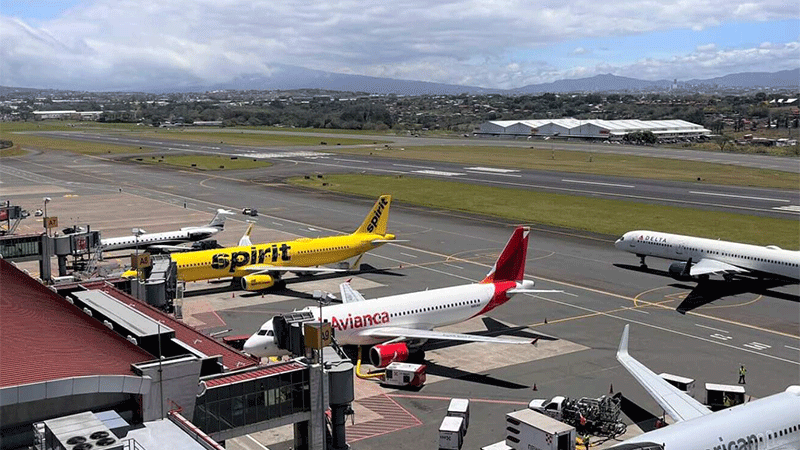Ensuring safety and efficiency in tropical conditions at Costa Rica’s airports
The client: The Civil Aviation Authority of Costa Rica
Vaisala solution: Vaisala AviMet Runway Visual Range system & Vaisala Transmissometer LT31
THE CHALLENGE:
In Costa Rica, the tropical climate shifts between dry and rainy seasons. During the rainy season, high humidity can reduce visibility to as low as 100 meters. This creates serious challenges for airports, especially the main airport - Juan Santamaria - which lies between the Pacific and Atlantic Oceans. The visibility here often changes quickly, making it difficult to manage flight operations.
When visibility drops, flights can’t safely take off or land, forcing delays, disruptions, and aircraft to circle. Pilots and air traffic controllers must act fast and make confident, accurate decisions, but to do so, they need access to precise, realtime data.
Until now, airports in Costa Rica have relied on human observers to measure Runway Visual Range (RVR). However, this method has limitations: not only is it impractical to have staff on runways, training is difficult, and measurements are less accurate. When the airports experienced staff shortages during COVID-19, it became clear that they needed to modernize by bringing in automated systems that ensure smoother, more reliable operations.
THE APPROACH:
The Civil Aviation Authority installed Vaisala’s LT31-based RVR system at Juan Santamaría International Airport, selecting it for its accuracy, reliability, and low-maintenance design. These qualities were essential for providing uninterrupted visibility monitoring, particularly during busy periods or when staffing levels were limited.
The automated system works alongside human observations to deliver around-the-clock visibility data, even under the most challenging conditions. Its real-time reporting allows airport staff to make quick, informed decisions to maintain safety and efficiency during rapidly changing weather.
To maximize the system's effectiveness, Vaisala conducted comprehensive training for the airport’s technical team. This training covered both daily operations and long-term maintenance, ensuring the system could be used reliably and sustainably over time.
"The RVR system is indispensable. It provides continuous and reliable data, which is crucial for making quick decisions about visibility changes at the airport. This system has significantly improved safety and operational efficiency at Juan Santamaría International Airport"
Evelyn Quiros Badilla
Meteorologist, Civil Aviation Authority of Costa Rica
THE RESULTS:
Juan Santamaría Airport has taken a major step forward by implementing Vaisala’s LT31-based RVR system. This advanced technology provides continuous, reliable visibility data, ensuring smoother and safer operations, even in Costa Rica’s challenging weather conditions. In a country where tourism drives the economy, maintaining efficient and comfortable air travel is critical.
The system enhances airport operations by delivering automatic, real-time RVR measurements. This data has been helping airport staff to make more confident decisions during adverse weather, such as determining when to reopen runways or avoid costly flight diversions. The ability to instantly assess and respond to changing visibility keeps the airport operational and minimizes disruptions.
Access to both real-time and historical visibility data has significantly improved scheduling at Juan Santamaría. For example, the airport can now shift busy flights from low-visibility afternoons to clearer morning slots, reducing delays and improving the travel experience. This data-driven approach ensures more efficient operations while prioritizing passenger comfort and safety.
The system delivers consistent performance, integrates seamlessly with other sensors and human observers, and requires minimal maintenance. Its adaptability to sudden weather changes has made it an essential part of the airport’s infrastructure. By reducing downtime and ensuring operational continuity, the system supports Costa Rica’s critical tourism sector while setting new standards for airport efficiency and safety

